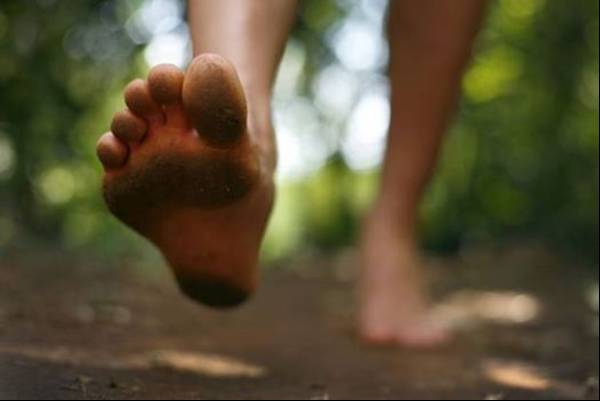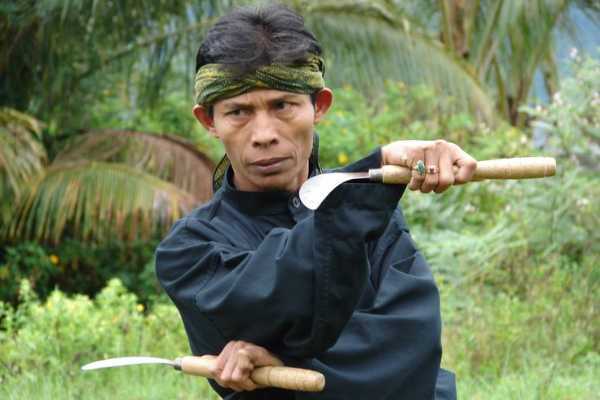Come and learn the importance of energy grounding rituals for self-development. They are the key to It is the key to practices like meditation and martial arts. Let’s explore the list of the best practices for energy centering.
In relation to mind, body and spirit, grounding is about being present. When we are grounded, we feel stable and secure and centered. Practices for energy centering are about inner balance and calmness. It helps you focus and feel in control.
What Are Rituals for Grounding Energy?
Grounding is a term used in many fields, from physics and electronics to spirituality. It is a connection between objects. Science tells us that all matter is energy, so we are a kind of conscious energy.
In relation to spiritual practices, grounding is about connecting with the present moment and your surroundings. It helps you feel stable and secure and centered. Practices for energy centering are about inner balance and calmness. It helps you focus and feel in control.
Mental Anchors Grounding and Holistic Health Practices
We can measure the effects of grounding our physiology and we experience how they affect us. These tools help us regulate heart rate and respiration; they give us a sense of peace. Grounding is real. Let’s start with some definitions and then some examples of energy grounding techniques. These are tools related to spiritual exploration. (1)
Mental health professionals use the term grounding to describe strategies regulating emotions. A mental anchor helps to keep you from slipping into unwanted thoughts and feelings. Many of the ancient techniques we’ll outline can help with this kind of anchoring but are not intended as a substitute for treatment.
Almost anything we can focus on can be a mental anchor. Meditation techiniques are an examples of focus anchors. They are the core of many meditative holistic health practices.
Any tool that grounds you also helps you to present. When you are present, you have more control over your thoughts, so you are less likely to fixate on negative thoughts. We won’t go into these clinical applications. Our interest is in methods that cultivate and expand awareness.
Importance of Energy Grounding Rituals for Health
Rituals for grounding energy help us connect, amplify, and align energy either internally or with the Earth. These practices for energy centering allows us to be present, balanced, and aligned. We can think more clearly and act with more purpose.
Many of these methods calm our hyperactive minds and cultivate a state of restful alertness. An example of this is when you feel calm during chaos; this calmness comes from being grounded. (2)
So, do they work? Yes. Try one of these exercises for yourself and see. People all around the world use many of these processes, and you can learn them from the articles on this website.

What Happens When Using Practices for Energy Centering?
When we ground ourselves, we connect all three aspects of our essence, which include the body, mind, and spirit. It’s a mental and physical state that can generate energy. It makes us present and aware.
As we stabilize and align our awareness, we feel in tune and have a sense of inner harmony. Practicing rituals for grounding energy make us more aware of all three aspects of our essence. They help us observe our thoughts so we can make better decisions. These techniques also make us more aware of our bodies so we can detect minor issues before they become major ones.
Practices for energy centering are the key to the experience of oneness. Oneness is not just a philosophical point of view. It is the physical sensing of our deep connection with the environment. It occurs when our vibrational frequency aligns with nature.
These processes depend on concentration and memory, which are attributes of focus. Focus requires selective attention. This is the ability to single out a particular thought and ignore other stimuli and thoughts. Focus also requires the ability to retrieve information from memory quickly and accurately.
Focus gives us the ability to sustain concentration. It also helps us expand focus to multitask by combining breath, movements, and mindset. These are the elements of any effective mental process or ritual. Proper focus results in clarity of mind and action, establishing the state of mind required to follow a process.
The Benefits of Grounding and Holistic Health Practices
Body ― The realization that we are part of nature and the Earth. Every material that makes up our body comes from the planet. The Earth is a significant part of our essence. We can learn to resonate with the vibrational frequency of the Earth.
Mind ― The mind is the mechanism that connects our consciousness to our bodies. It’s the mechanism of the ego that contains our personality and instincts. These tools are the window that connects us to the Observer. Some people call it the Observer, Spirit, or Soul.
Spirit ― Our Spirit, Soul, or Observer isn’t physical, but we know it exists because it is the person you talk to inside your head. It’s the person who experiences your dreams when you sleep. It’s the “real you.” The Observer connects to our body via the thread of consciousness. One of the primary goals of many grounding exercises is to connect the body, mind, and spirit.
Energy Alignment Practices promote clear, rational thinking. It also gives us the ability to control our breathing during life-threatening situations. This gives us control over the sympathetic and parasympathetic nervous systems. Therefore, we have more control over our emotions. We can switch off or on our anger and fear, fight, flight, or freeze response (3 F response).
Centering and grounding balance emotional equilibrium. That’s because when we connect with the Earth, we connect with other people. Thus, it facilitates positive thoughts and energy. We use positive energy healing practices like Reiki, Shiatsu, and Pejut. Above all, the effect is positive and beneficial for our health and wellness.
List of Energy Grounding Rituals for Self-Development
We’ve put together a list of the most effective techniques for centering and grounding. We teach these tools in our blended learning process. Many people believe grounding this is the best place to start your spiritual journey. That is because many other spiritual technologies depend upon your ability to be grounded and centered.
None of these techniques require you to join a religion. Some energy grounding rituals for self-development require as little walking barefoot.
Natural Grounding or Earthing as a Morning Ritual

Earthing is walking barefoot on natural soil. All you need to do is go barefoot. It’s perhaps the simplest of the rituals for grounding energy. Electrical engineering is the source of the term Earthing. Earthing means to discharge or exchange energy between two things. The same concept applies to people and the Earth.
Walking barefoot on the ground untouched by man because it puts you in touch with the unspoiled fabric of the Earth. It’s why walking barefoot on the beach is soothing, and there is some fascinating science behind Earthing (3).
Use common sense and avoid areas that may be polluted or chemically treated, like golf courses. Also, avoid walking on synthetic surfaces like asphalt or concrete. Don’t overlook safety and watch out for objects that can hurt your feet. Beaches are popular surfaces because the sandy soil makes it easy to spot and avoid sharp objects.
Earthing as a morning ritual is a technique that helps us exchange energy with the Earth. It’s a way to connect with the planet’s vibrational energy.
Tree Grounding Exercise

The idea of Tree Grounding is easy to understand. You reach out either physically or visually and connect with a tree. After all, the roots of trees are a physical representation of the connection we are trying to make.
The practice helps focus the mind on nature and calm our overactive minds. Many people find it an oasis, giving us a chance to rest. It’s a great way to reduce stress and honor nature.
The Best Breathing Exercises for Energy Grounding
Breathing is even more natural than walking. We take our breath for granted. It’s like our heartbeat. We don’t have to think about it. However, we can learn to observe and control it. When you pay attention to your breathing, you exercise self-awareness. This improves focus and clarity of mind.
Specific breathing techniques can control our heartbeat, emotions, and hormone release. Breathing exerices underscore the importance of energy grounding rituals for self-development. Let’s look at the best of these tools.

1. Alternate Nostril Breathing (Nadi Shodhana) is a powerful breathing technique. It is used in advanced yoga techniques, like the Siddhis of Patanjali.
This technique involves breathing through one nostril at a time while closing the other nostril with your fingers. This technique is known for its calming and balancing effects on the mind and body.
1. Sit Comfortably with your spine straight and shoulders relaxed.
2. Close Your Right Nostril using your right thumb to close your right nostril.
3. Inhale Quickly Through Your Left Nostril
4. Then, Close Your Left Nostril using your right ring finger to close your left nostril.
5. Exhale Through Your Right Nostril releasing your right thumb.
6. Repeat the Process quickly, opening and closing each nostril.
Alternate nostril breathing encourages diaphragmatic breathing. It involves moving the diaphragm downward as you inhale, allowing your lungs to expand fully. This movement creates a gentle “fluttering” sensation in the diaphragm. This is one of the best breathing exercises for energy grounding and alignment.
2. Holotropic Breathing is a deep breathing exercise done while reclining on your back. You take long, deep breaths through your mouth for an extended period, usually thirty minutes or more.
A trained coach or facilitator is recommended to guide you through the breathing and assist you with any emotions that may arise. Holotropic breathing causes hyperventilation, producing an altered state. It allows the participant to delve into the subconscious mind.
3. Box Breathing (Four-Square Breathing) is a method that is often used by athletes to prepare. It helps you stay focused and calm during stressful situations.
Inhale for 4 seconds, hold your breath for 4 seconds, exhale for 4 seconds, and hold your breath again for 4 seconds. Repeat this cycle several times. It’s one of the easiest and best breathing exercises for energy grounding. The benefits of concentration and reduced stress are felt immediately. It’s a handy technique to use any time you face an important or stressful situation, like giving a presentation or skydiving. In stressful times, the importance of energy grounding and holistic health practices is more clear.
Beginning Grounding Meditation Script

As the name implies, it is a simple process. It is one of the best tools for energy grounding and alignment.
If you want to learn how to meditate, start with this method because it is based on key principles used in many other advanced forms of meditation. Master these two fundamental steps, and all other kinds of meditation will be more accessible.
Meditation is an oasis of silence where the mind naturally moves to a place of peace. This method settles the active mind and stops internal chatter. Silencing our inner chatter allows us to feel grounded, which is why it’s called a grounding meditation script. Now, you can listen and think more clearly.
The most productive meetings always begin with a few moments of silence. Silence is itself a type of grounding. The silence of solitude is healing. It’s like the reset button on a computer. Here we go.
1. Find a Quiet Space where you won’t be disturbed. This helps you focus better. Sometimes, this is the hardest part of the process.
2. Sit comfortably either on a chair with your feet flat on the ground or on the floor with your legs crossed. Keep your back straight but relaxed.
3. Close your eyes to help minimize distractions and turn your attention inward.
4. Take a few deep breaths in through your nose and out through your mouth. This will help you relax and settle into your meditation.
5. Observe your breath. Breathe naturally and focus on your breath. Notice the sensation of the air entering and leaving your nostrils or the rise and fall of your chest or belly.
6. Scan your body. Slowly bring your attention to different parts of your body, starting from your head and moving down to your toes. Notice any areas of tension or relaxation.
7. Return to your breath. When your mind starts to wander, gently bring your focus back to your breath. It’s normal for thoughts to come and go; just acknowledge them and return to observing your breath.
8. Continue for a set time: Try to meditate for about 2-3 minutes. You can gradually increase the time as you become more comfortable with the practice.
9. End gently. When you’re ready to finish, take a few deep breaths, gently open your eyes, and notice how you feel before getting up.
Mindfulness Energy Alignment Practices

Mindfulness builds upon the beginning grounding meditation script. Mindfulness Meditation includes a seated and moving progression. Learning this method is easy. It’s a practical way to take the stillness of meditation into motion. This method builds the bridge between seated and moving meditation. Both processes promote a healthy connection to the “source.” It’s one of the best ways to silence self-talk.
Once you are comfortable with the seated grounding meditation, slowly open your eyes. Expand your awareness to include your surroundings. Divide your focus between body, breath, and the surroundings. When you do this, you’ve reached the state of mindfulness.
After you are comfortable with seated mindfulness, stand slowly and begin walking. This dimension of movement adds to the complexity of the information you are processing, so take it slow. It’s the basis for all forms of moving meditation. It opens a whole progression of energy grounding rituals for self-development, from mindfiness, to forest bathing and martial arts.
The moving mindfulness method is an excellent way of learning how to be grounded yet moving. We use it to prepare for other forms of moving meditation, like Tai Chi. You can do it almost anywhere and for any length of time, making it a versatile grounding form.
You can learn the grounding meditation script and mindfulness practices for clarity of mind in less than five minutes. Once you learn them, these techniques are yours forever.
Forest Bathing

Shinrin-yoku is Japanese for “taking in the forest atmosphere.” Most people call this method forest bathing. It combines mindfulness meditation, tree grounding, and walking. In Japan, it is a part of preventative healthcare.
Many see the method as the use of moving mindfulness while walking in the wilderness. Being in nature while using mindfulness is a refreshing way to get grounded. When we conduct our seminars, we always try to do it in or near a nature preserve. Spending time in nature facilitates the normalization of any new spiritual technology.
Martial Arts

The importance of grounding and centering in martial arts cannot be understated. These activities are specialized forms of moving meditation. They are the some of th best energy grounding rituals with a practical purpose.
Being grounded while moving seems contrary to common sense. How can one move but also be grounded? It requires a balance of breath, movement, and mindset.
The choreographed movements, proper mindset, and breathing become a mnemonic learning device. They connect us with the “source” while we are moving. Tai Chi, Tai Ka, and Qigong are martial arts platforms that often focus on this concept. Indonesian forms of Silat use this concept. It’s a way of dancing with your opponent. They will use the rhythm of the Gamelan to become grounded while moving. Combat becomes a dance.
Grounding and Centering in Yoga
To be grounded and centered in yoga, you must find a balance between postures, breath, and a proper mindset. Your breath is like the rhythm of your practice. Many types of yoga asana work best when taking deep, steady breaths. This kind of breathing helps you stay calm and focused. It also gives your muscles the oxygen they need to move and stretch. When you breathe deeply, you can feel more connected to your body and the present moment.

In yoga, every movement should be smooth and controlled. This helps you build strength and flexibility without straining your body. Moving mindfully, in sync with your breath, makes your practice more effective and enjoyable. Imagine flowing from one pose to another like a gentle wave.
Finally, having the right mindset means being present and focused on your body during your practice. It’s about letting go of distractions and being kind to yourself. A positive mindset helps you better handle challenges and stay motivated.
Balancing your breath, movement, and mindset is the key to grounding and centering in yoga. It makes your yoga practice a powerful tool for both physical and mental well-being.
Understanding The Importance of Grounding and Centering
Incorporating energy grounding rituals for self-development into your routine will open up a new range of possibilities. Most rituals for grounding energy are easy to learn and use. We encourage you to learn them all. Most of them are covered in articles on this website.
References
(1) Grounding: Exploring Earthing Science and the Benefits Behind It. healthline.com
(2) What is Grounding? Wikipedia
(3) The effects of grounding (earthing) on inflammation, the immune response, wound healing, and prevention and treatment of chronic inflammatory and autoimmune diseases. National Library of Medicine
